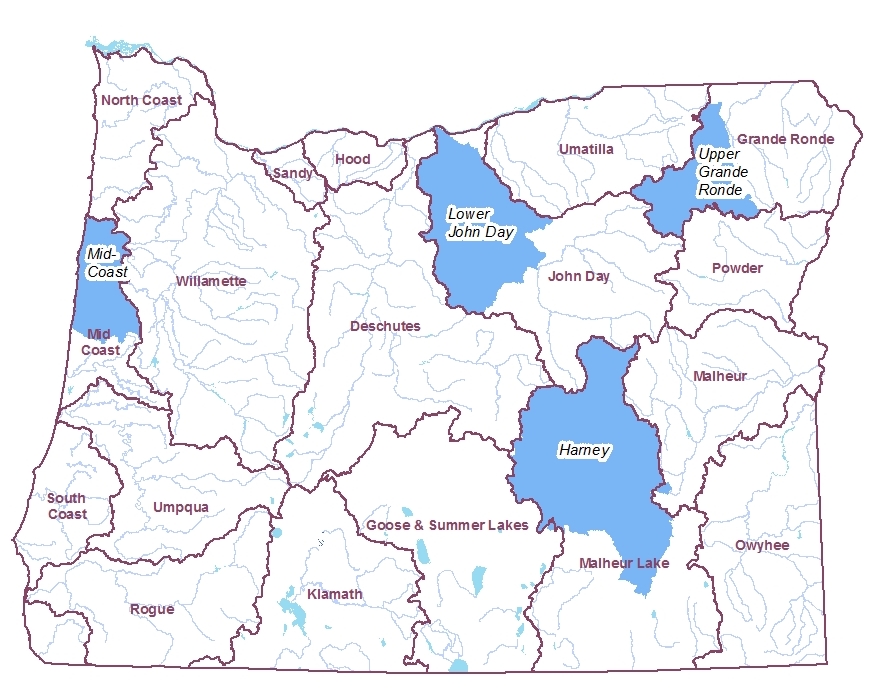Place-Based Water Planning (PBP) is a voluntary, locally led, and collaborative process that brings together an area’s water interests to develop a holistic understanding of the area’s water resources and plan for a water future that promotes and sustains a healthy economy, environment, and society. Upon completion, state-recognized Place-Based Water Plans: identify actions that help meet current and future instream and out-of-stream water quantity, quality, and ecosystem needs; aid state agencies in identifying and considering regional priorities; and provide a platform for continued collaboration to solve complex regional water issues.
Place-Based Water Planning is Action 9.A in Oregon’s 2025 Integrated Water Resources Strategy. The Oregon Water Resources Department (OWRD) and other state agencies provide guidance, funding, and technical assistance to place-based initiatives to bring interested parties together, develop and update plans, and coordinate plan implementation.
Place-Based Integrated Water Resources Plans
Since 2015, four Planning Collaboratives across Oregon have developed and adopted state-recognized Place-Based Water Plans and are currently implementing those plans. For more information about state-recognized plans and their implementation, visit the links below.
- Harney Community Based Water Planning Collaborative: Webpage | Plan
- Lower John Day Place-Based Partnership: Webpage | Plan
- Mid-Coast Water Planning Partnership: Webpage | Plan
- Upper Grande Ronde River Water Resources Partnership: Webpage | Plan
Place-Based Water Planning Handbook
The public review period for the Draft Handbook for Place-based Integrated Water Resources Planning in Oregon ended on Friday, November 14. OWRD is reviewing feedback and will be releasing an updated version in early 2026.
The Place-Based Water Planning Handbook reflects the evolution of Oregon’s Place-Based Planning program and incorporates lessons learned from past planning efforts, agency collaboration, and public engagement.
Placed-Based Water Planning Grants
Place-Based Water Planning Grants support place-based initiatives to bring interested parties together, develop and update place-based water plans, and coordinate implementation of state-recognized plans. More information on available grants can be found here.
Place-Based Water Planning Document Archive
- Independent Evaluation of the Place-Based Water Planning Program
- State-Supported Regional Water Planning and Management Workgroup
OWRD provided updates every six months during the pilot phase to track programmatic and place-based accomplishments.